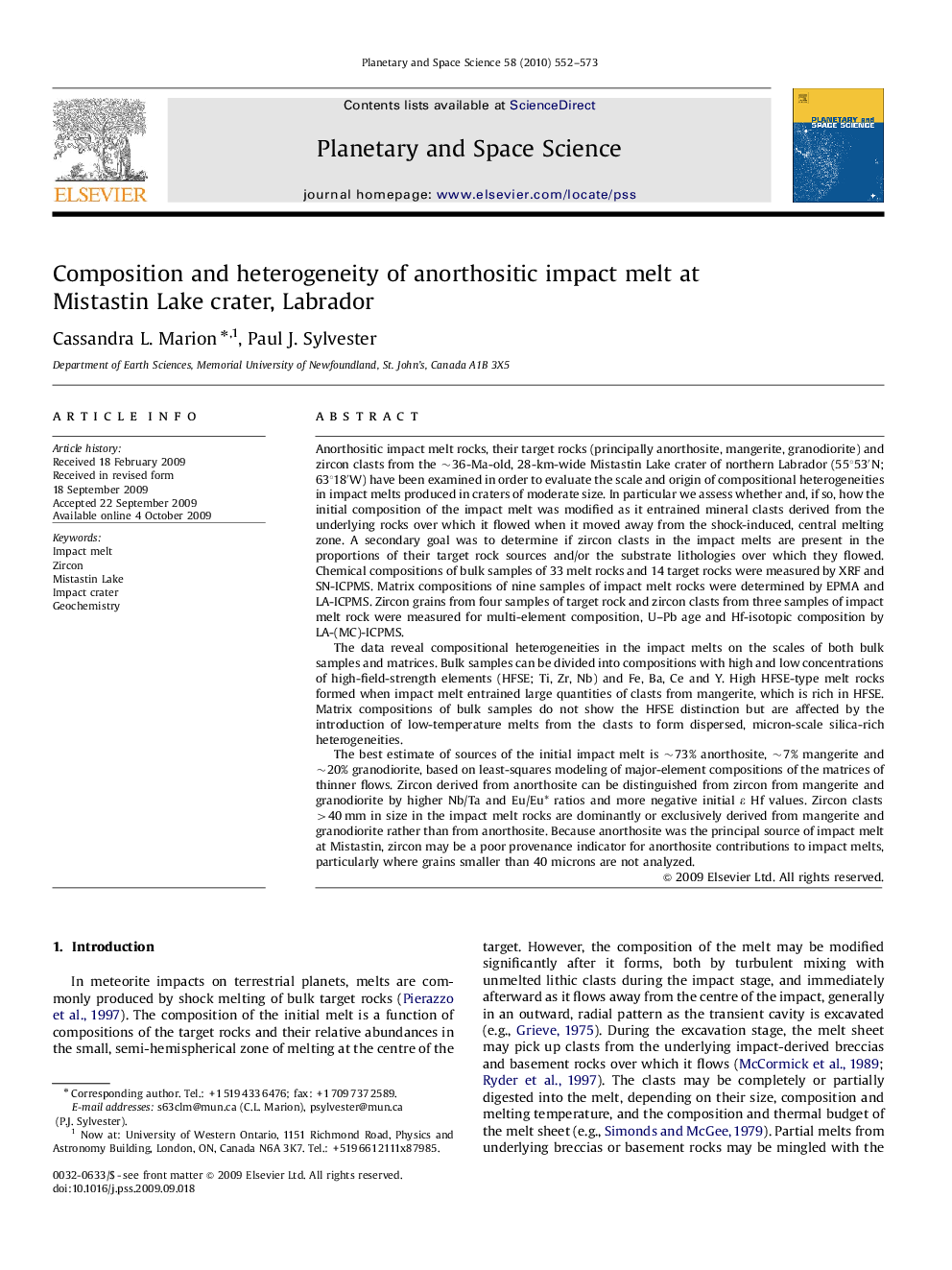| Article ID | Journal | Published Year | Pages | File Type |
|---|---|---|---|---|
| 1781989 | Planetary and Space Science | 2010 | 22 Pages |
Anorthositic impact melt rocks, their target rocks (principally anorthosite, mangerite, granodiorite) and zircon clasts from the ∼36-Ma-old, 28-km-wide Mistastin Lake crater of northern Labrador (55°53′N; 63°18′W) have been examined in order to evaluate the scale and origin of compositional heterogeneities in impact melts produced in craters of moderate size. In particular we assess whether and, if so, how the initial composition of the impact melt was modified as it entrained mineral clasts derived from the underlying rocks over which it flowed when it moved away from the shock-induced, central melting zone. A secondary goal was to determine if zircon clasts in the impact melts are present in the proportions of their target rock sources and/or the substrate lithologies over which they flowed. Chemical compositions of bulk samples of 33 melt rocks and 14 target rocks were measured by XRF and SN-ICPMS. Matrix compositions of nine samples of impact melt rocks were determined by EPMA and LA-ICPMS. Zircon grains from four samples of target rock and zircon clasts from three samples of impact melt rock were measured for multi-element composition, U–Pb age and Hf-isotopic composition by LA-(MC)-ICPMS.The data reveal compositional heterogeneities in the impact melts on the scales of both bulk samples and matrices. Bulk samples can be divided into compositions with high and low concentrations of high-field-strength elements (HFSE; Ti, Zr, Nb) and Fe, Ba, Ce and Y. High HFSE-type melt rocks formed when impact melt entrained large quantities of clasts from mangerite, which is rich in HFSE. Matrix compositions of bulk samples do not show the HFSE distinction but are affected by the introduction of low-temperature melts from the clasts to form dispersed, micron-scale silica-rich heterogeneities.The best estimate of sources of the initial impact melt is ∼73% anorthosite, ∼7% mangerite and ∼20% granodiorite, based on least-squares modeling of major-element compositions of the matrices of thinner flows. Zircon derived from anorthosite can be distinguished from zircon from mangerite and granodiorite by higher Nb/Ta and Eu/Eu* ratios and more negative initial ε Hf values. Zircon clasts >40 mm in size in the impact melt rocks are dominantly or exclusively derived from mangerite and granodiorite rather than from anorthosite. Because anorthosite was the principal source of impact melt at Mistastin, zircon may be a poor provenance indicator for anorthosite contributions to impact melts, particularly where grains smaller than 40 microns are not analyzed.
